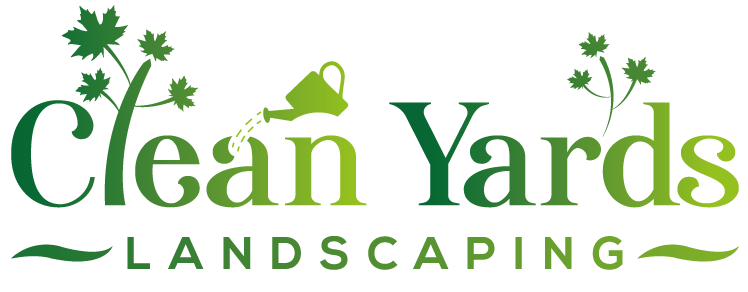Russell: Support Local Bees with a Fall Pollinator Garden
Quick Summary: Helping Russell's Bees This Fall
- Fall gardens provide crucial late-season food for bees preparing for winter.
- Plant late-blooming perennials like Asters, Goldenrod, and Sedum.
- Provide water sources and leave leaf litter/stems for shelter.
- Choose sunny spots with improved soil (add compost!).
- Avoid harsh chemicals to protect pollinators.
Need help creating your pollinator paradise? Request a free quote today!
Introduction: Why Russell Needs Buzzworthy Fall Gardens
Hey Russell! Can you feel that crisp autumn air starting to roll in? While we might be thinking about pumpkin spice and cozy sweaters (and maybe dreading the inevitable snow just a *little* bit), our fuzzy little bee buddies are still hard at work. It's easy to think gardening season winds down after summer, but creating a *buzzworthy* fall garden is super important, especially for bees right here in the Ottawa area. Think of it as a final feast before the big chill!
Why the fuss about fall flowers? Well, bees, particularly queen bees getting ready for winter and any late-season foragers, desperately need nectar and pollen sources well into the autumn months. Summer blooms might be fading, but these pollinators haven't clocked out yet. Planting late-blooming perennials and choosing specific native plants in your landscaping isn't just about extending the season's colour; it's a *lifeline* for these essential insects.
Your Russell, Embrun, or even Metcalfe garden can become a vital pit stop, offering crucial fuel. By adding fall blooms, you're doing more than just prettying up your yard – you're actively supporting local bee populations. Let's give our hardworking pollinators the boost they need to survive the winter and come back strong next spring! It's a simple garden maintenance choice with a wonderfully positive impact.
The Late-Season Buffet: Why Fall Forage is Critical for Ottawa Bees
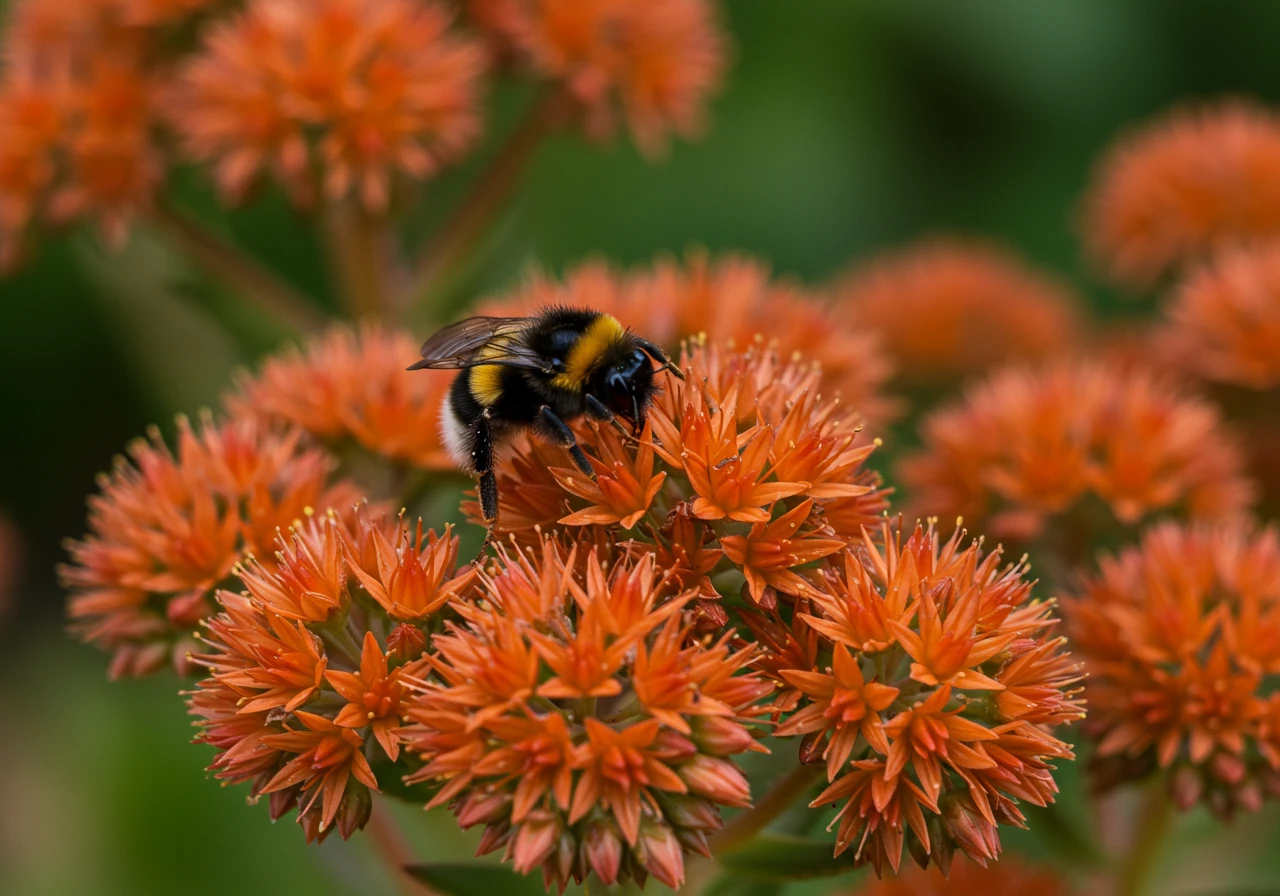
Okay, picture this: summer's winding down, the BBQ cover is making more frequent appearances, but hold on – the party isn't *quite* over for our buzzing buddies! Here in Ottawa, fall is crunch time for bees. While we're thinking about Thanksgiving dinner, they're desperately searching for their own late-season feast, and it's super important we help provide it in our gardens and landscaping.
Why is this fall buffet so critical? Think of it like this:
- Winter Warriors: For bumblebee queens, fall nectar is pure survival fuel. They need to fatten up to survive hibernation underground all winter long, emerging next spring to start brand new colonies. No fall food? No next generation. It's that simple.
- Honeybee Hoarders: Honeybee colonies don't hibernate like bumblebees. They huddle together in a big cluster to stay warm. This takes a *ton* of energy, which comes from the honey stores they build up over the warmer months. Fall flowers provide the last vital ingredients for that honey pantry, ensuring the colony has enough food to last until spring.
- Solitary Stockpilers: Let's not forget the many solitary bee species! Many are still active late in the season, busy laying eggs in tunnels or stems and packing pollen "lunches" for their offspring to eat when they emerge next spring. They need those late blooms to finish the job.
Our Ottawa climate, with its sometimes shorter growing seasons and definitely chilly winters, makes this final food push *extra* important. Plus, as areas like Barrhaven and Nepean continue to grow and develop, natural foraging habitats like meadows and wild edges can shrink. This makes our gardens, whether in Russell, Greely, or right downtown, even more vital as reliable food stops. Your backyard landscaping choices can be a genuine lifeline!
So, what can you, the savvy Ottawa gardener, do? It's simpler than you might think!
- Plant Late Bloomers: This is the big one! Add perennials like asters, goldenrod (the native kind, *not* the allergy monster ragweed!), sedum ('Autumn Joy' is a pollinator magnet), sneezeweed (Helenium), and Joe Pye weed to your garden beds. These beauties provide nectar and pollen when many summer flowers have packed it in. Keeping good Russell fall garden planting notes can help you track what thrives in your yard and blooms latest for next year's planning.
- Don't Tidy *Too* Much, Too Soon: Resist the urge to cut *everything* back the moment it looks a bit faded. Leave some flower heads and hollow stems standing through the fall and even into winter. They can provide crucial shelter for overwintering bees and other beneficial insects, and sometimes residual food sources. A balanced approach is key; you want things reasonably neat, but nature-friendly. Remember, a healthy yard overall supports pollinators, and understanding your guide to holistic Russell lawn care can contribute to a bee-safe environment, especially by minimizing harmful chemicals.
- Provide a Safe Sip: Bees get thirsty too, especially during dry fall spells! A shallow dish filled with pebbles or marbles and a bit of water makes a perfect bee bath. The stones give them safe places to land so they don't drown. If you have a pond or water feature, ensuring it's clean and easily accessible (perhaps using tips from this guide to clear Russell pond water) offers a reliable water source for bees and other wildlife.
- Think Beyond Flowers: Even fallen leaves provide important shelter over winter. Consider leaving a layer of leaves in your garden beds – it's nature's free mulch! This is a core part of good property clean up practices.
- Light Right: As evenings arrive earlier, think about how your outdoor lighting affects the garden's ecosystem. Bright, harsh lights can disorient nocturnal insects, including some pollinators. Ensure your lighting choices, perhaps guided by tips for Russell outdoor lighting and security this fall, minimize disruption to the garden's night-shift crew.
Creating this late-season buffet doesn't require a massive garden overhaul. Even a few well-chosen plants in containers on a balcony can make a real difference. And if planning and planting a bee-friendly fall landscape feels like a bit much on top of everything else, remember that professional landscaping and garden care services are available to help design and maintain that perfect pollinator pit stop in your Russell, Nepean, or anywhere-in-Ottawa yard! Check us out on Google! Let's give our hardworking bees the energy boost they need to survive the winter and buzz back strong next spring.
Planning Your Pollinator Patch: Sun, Soil, and Space in Russell & Beyond
Okay, let's talk about rolling up our sleeves and actually *planning* where your fabulous pollinator patch will go! Picking the right spot is like choosing the perfect seat at a concert – it makes all the difference. Here in Russell and across the Ottawa region, thinking about sun, soil, and space *before* you plant is key to a thriving bee buffet.
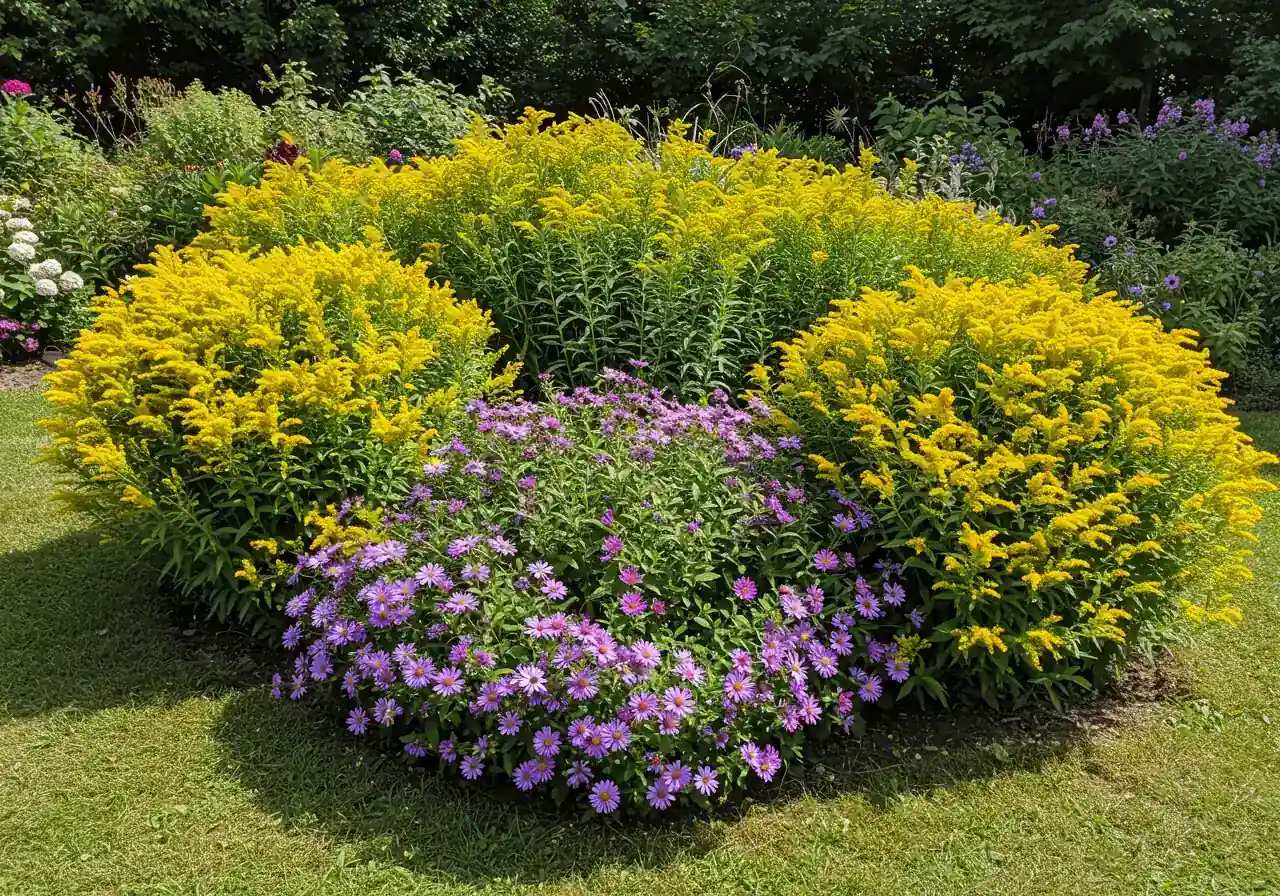
Sunny Side Up: Following the Rays
First things first: sunshine! Most of the awesome fall-blooming perennials that pollinators adore are total sun-lovers. Think of them as the beach bums of the plant world. They generally need *at least* six hours of direct sunlight each day to produce the best flowers (and therefore, the most nectar and pollen).
- Action Tip: Play detective for a day! Watch where the sun hits your yard throughout the day. Morning sun? Afternoon sun? All day long glorious sunshine? Note it down. This simple site assessment helps you avoid placing sun-loving plants in a shady spot where they'll sulk and refuse to flower properly. Don't have a super sunny spot? Don't despair! Some fall pollinator plants tolerate part shade, but full sun gives you the most options.
Digging In: Getting Friendly with Your Soil
Ah, soil. Here in the Ottawa area, especially as you move through places like Russell or Greely, we often deal with clay soil. Clay isn't *bad*, it's just... misunderstood. And a bit stubborn. It holds water well (sometimes too well, leading to soggy roots) and can get hard and compacted. Bees prefer plants with happy feet (roots!). Proper soil preparation is vital.
- Action Tip: Grab a handful of your garden soil. Does it squeeze into a tight, sticky ball? That's likely clay. The best way to improve it is by adding organic matter – glorious compost! Mixing compost into your garden beds improves drainage, adds nutrients, and makes it easier for roots to grow. You can buy bags of compost or use your own if you have a bin. Sometimes, just getting the area ready involves clearing out old roots or weeds, which might require some elbow grease or help from a getting your space ready with Russell yard cleanup team. If you have a larger area to prep, perhaps in nearby communities, you might need more extensive help prepping larger plots like those needing Marionville yard cleanup. Not all soil is heavy clay, of course; areas closer to the river, like parts of Manotick, might have sandier loam, which drains faster and benefits from compost to retain moisture.
Space Race: How Big Should You Go?
Dreaming of a massive pollinator meadow? Awesome! Thinking more along the lines of a few pots on the patio? Also awesome! The "right" size depends entirely on *you* – your available space, your budget, and how much time you want to spend on garden care.
- Action Tip: Start manageable! It's often better to have a small, well-maintained pollinator patch than a huge, weedy one. Even a few square feet or a collection of containers can make a big difference. Think about pathways and access for weeding and watering. If you're converting a larger, neglected part of your yard, you might first need a thorough clearing the area with a thorough city yard cleanup service to get a blank slate. Remember that any garden needs tending; consider if you'll handle it yourself or utilize an ongoing city garden maintenance service to keep it looking great and supporting pollinators year after year. Ultimately, whether you need extensive site preparation or just want help choosing the right spot, exploring professional landscaping services can provide tailored advice for your specific Ottawa-area yard.
Taking a little time to plan these three S's – Sun, Soil, and Space – sets your pollinator patch up for success, making it a truly welcoming haven for those hardworking bees and butterflies this fall and beyond!
Blooms for Bees: Top Fall-Flowering Plants for Ottawa Gardens
Okay, garden superheroes! You've prepped your patch, considered the sun, wrestled with the soil (maybe literally, if you're dealing with that classic Ottawa clay!), and now for the fun part: choosing the actual flowers! Think of this as setting the menu for the bees' last big party before winter. We want delicious, nutritious, and preferably local options – just like any good host would provide!
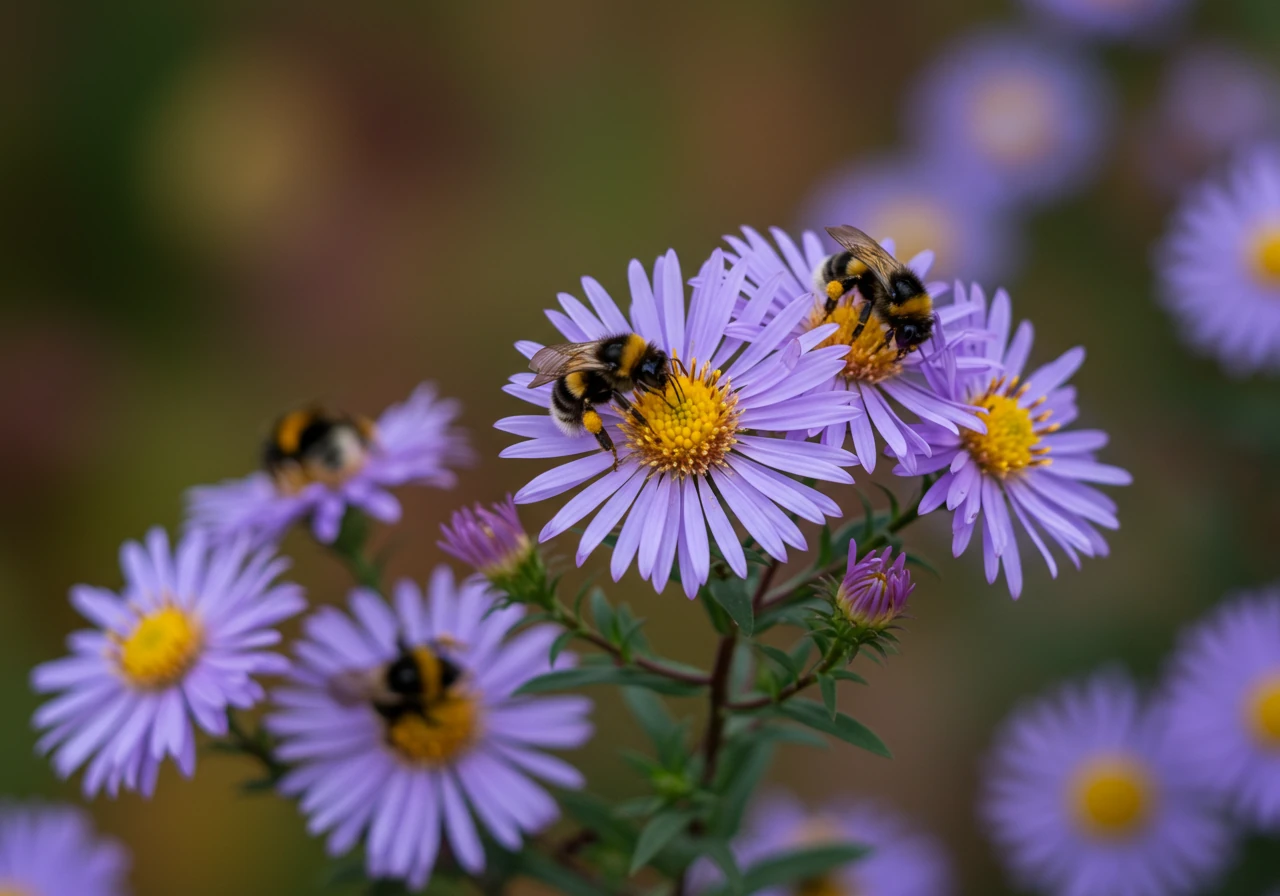
Here are some top fall-blooming plant picks that thrive in our Ottawa climate (hello, Zone 5!) and will have the bees buzzing with gratitude, right into the cooler days.
1. New England Aster (Symphyotrichum novae-angliae)
What it looks like: Get ready for a pop of vibrant colour! These native beauties explode with daisy-like flowers in shades of purple, pink, and sometimes even deep rose, usually surrounding a bright yellow centre. They can get fairly tall, making a fantastic backdrop in your garden beds. You often see drifts of them painting the roadsides beautifully near areas like Winchester in the fall.
Why bees love it: It's a powerhouse! Nectar and pollen-rich, it's especially vital for late-season bumblebee queens fueling up for winter hibernation and for honeybees topping up their winter stores. A true native hero.
Care Needs: Give it full sun for the best flower show. It's pretty adaptable to different soil types but prefers average moisture. Good air circulation helps prevent powdery mildew, a common Aster ailment (don't plant them *too* tightly packed).
2. Canada Goldenrod (Solidago canadensis)
What it looks like: Hold on, don't run! This native stunner gets a bad rap because of its allergy-triggering cousin, Ragweed. Canada Goldenrod is *not* the culprit for your sneezes (its pollen is heavy and sticky, carried by insects, not wind). It features plumes of brilliant golden-yellow flowers atop tall stems. It’s vigorous!
Why bees love it: It's basically a five-star buffet for bees and other pollinators late in the season. Absolutely critical nectar and pollen source. If you see bees frantically working flowers in September/October, chances are Goldenrod is on the menu.
Care Needs: Full sun is best. It tolerates a wide range of soils, even poor ones, but can spread enthusiastically in ideal conditions. Consider placing it where it has room to roam or be prepared to manage its spread. Sometimes managing vigorous native plants on larger lots requires a bit more effort, maybe even calling for a professional city property cleanup service if things get out of hand over time.
3. 'Autumn Joy' Sedum (Hylotelephium 'Herbstfreude')
What it looks like: Okay, this one isn't native, but it's SO popular and SO good for bees, we have to include it. It forms sturdy clumps with succulent, fleshy leaves. The large flower heads start pale green/pink in late summer and deepen to a beautiful rosy pink, then coppery red/russet as fall progresses. They look great even into winter!
Why bees love it: The flat flower clusters are perfect landing pads, and they are *loaded* with nectar. Honeybees, bumblebees, and even butterflies flock to it. An absolute bee magnet.
Care Needs: Loves full sun and needs well-drained soil. It hates soggy feet, so amend heavy clay soil with compost. Very low maintenance. Resist the urge to cut the dead flower heads back too early in the fall; they provide winter interest and potential shelter. Deciding what to leave and what to trim is part of a good fall routine, something covered by a thorough fall city garden clean up service.
4. Sneezeweed (Helenium autumnale)
What it looks like: Another plant with a misleading name! Cheerful, daisy-like flowers in warm shades of yellow, orange, and reddish-brown bloom atop sturdy stems. The centre cone is quite prominent. It adds a lovely, warm glow to the autumn garden.
Why bees love it: Provides both nectar and pollen. The unique petal shape (slightly drooping with notched tips) doesn't deter the bees one bit! Attracts a variety of bee species. A reliable native choice.
Care Needs: Full sun champion. It prefers consistently moist soil but can tolerate average conditions once established. Might need staking if grown in very rich soil or part shade, as it can get a bit leggy.
5. Smooth Aster (Symphyotrichum laeve)
What it looks like: Similar to its New England cousin but often with smoother leaves (hence the name!) and typically paler blue-lavender flowers. It has a slightly more refined, airy look. Another fantastic native option.
Why bees love it: Just like other asters, it's a crucial late-season food source, offering nectar and pollen when little else is blooming. Supports specialist bees that rely on asters.
Care Needs: Full sun preferred, but can tolerate a little light shade. Adaptable to various soil types, including drier conditions than New England Aster sometimes prefers. Generally trouble-free.
Also Consider:
- Joe Pye Weed (Eutrochium maculatum): Tall, stately native with large mauve-pink flower clusters. Loves moisture and sun. Great for larger spaces or back borders, perhaps similar to areas needing extensive Ottawa property cleanup.
- Anise Hyssop (Agastache foeniculum): Native with licorice-scented foliage and long-blooming lavender flower spikes. A bee magnet! Needs full sun and well-drained soil.
Finding Your Plants & Planting Tips:
Look for these pollinator heroes at reputable local nurseries – supporting local businesses helps our community thrive, something we strongly believe in as you can see by learning more about us and our local commitment. When planting, try grouping 3-5 of the same plant together. These drifts create a bigger visual target for bees and allow them to forage more efficiently instead of flitting randomly between single plants.
Preparing the garden bed properly is essential. This might involve removing old turf – a different process than laying new grass from a professional sod installation service – amending the soil with compost, and ensuring the area is weed-free. If you're converting a large neglected area into a pollinator paradise, getting help with the initial clearing from a comprehensive city yard cleanup service can save you a ton of time and effort.
| Plant | Sun Needs | Typical Height | Bloom Colour |
|---|---|---|---|
| New England Aster | Full Sun | 3-6 ft | Purple, Pink, Rose |
| Canada Goldenrod | Full Sun | 2-5 ft | Golden Yellow |
| Autumn Joy Sedum | Full Sun | 1.5-2 ft | Pink to Russet |
| Sneezeweed | Full Sun | 2-4 ft | Yellow, Orange, Red-Brown |
| Smooth Aster | Full Sun/Lt Shade | 2-4 ft | Blue-Lavender |
By adding even a few of these fall-flowering champions to your Ottawa garden, you're providing a vital fuel stop for our precious pollinators. Happy planting!
*Illustrative chart showing peak availability of typical fall blooms for bees.
Get Planting! Your Step-by-Step Guide to a Bee-Friendly Fall Garden
Okay, let's get those hands dirty! You've picked your spot, chosen your bee-friendly superstars, and now it's time for the main event: planting! Don't worry, it's easier than assembling flat-pack furniture, I promise. Here’s your step-by-step guide to getting those fall flowers settled into their new Ottawa home.
Step 1: Timing is Everything (Almost!)
In our lovely Ottawa climate, the sweet spot for planting fall perennials is generally from late August through September, sometimes early October. Aim for 4-6 weeks before a hard freeze (late Oct/Nov). Don't wait for snowflakes!
Step 2: Prepare the Perfect Pad (Soil Prep)
Loosen soil (12 inches deep). Mix in compost generously. Clear weeds/debris. Need help? Consider an Ottawa garden clean up service or even a larger City of Ottawa property cleanup service. Our Privacy Policy ensures your details are safe.
Step 3: Planting Power!
Dig hole 2x wider, same depth as pot. Gently tease out circling roots. Position plant level with soil. Backfill gently but firmly.
Step 4: Water Wisely
Soak thoroughly right after planting. Keep soil consistently moist (not soggy) until ground freezes. Check soil moisture regularly, don't rely only on rain.
Step 5: Tuck Them In (Mulching Magic)
Apply 2-3 inches of organic mulch around plants (not touching stems). This helps retain moisture, suppress weeds, and insulate roots. Consider professional mulching and edging for a clean look.
Container Adaptation for Embrun (and beyond!): Living in Embrun or have limited space? No problem! Many fall bloomers like Asters and Sedum do well in large pots. Ensure pots have drainage holes, use quality potting mix (not garden soil), and follow the same watering and light mulching steps. Container plants may need more frequent watering as they dry out faster.
There you have it! You’ve successfully planted a fall feast for our fuzzy friends. Give yourself a pat on the back – the bees will surely send you a buzzing thank you note next spring! Happy planting!
Beyond Flowers: Creating a Year-Round Bee Haven
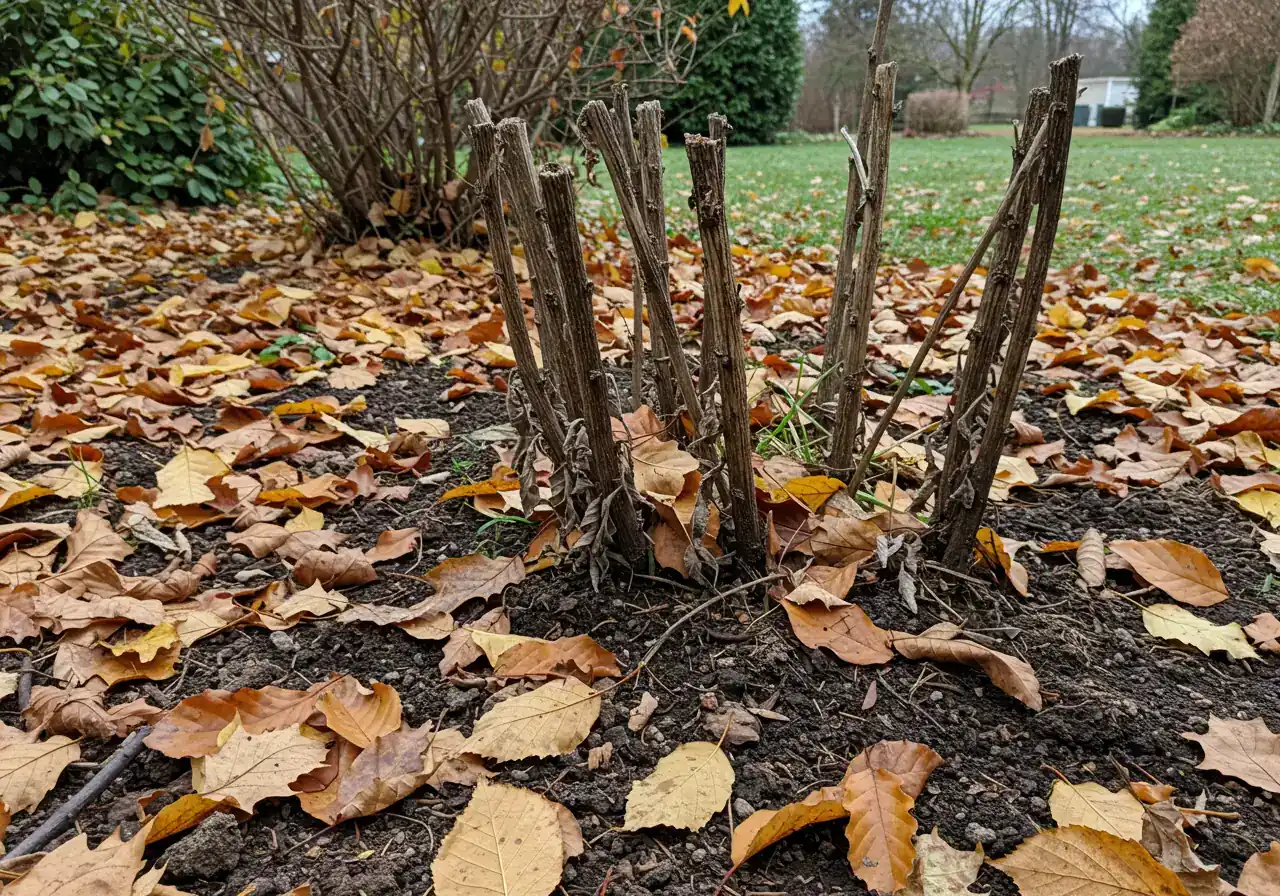
So, you've planted some gorgeous fall blooms – fantastic! High fives all around! But becoming a true bee champion goes beyond just offering a seasonal floral buffet. Think of it like this: you wouldn't invite friends over for a great dinner and then lock them out in the cold afterwards, right? (Hopefully not!) Our buzzing buddies need support *all year long*, not just when the flowers are looking fabulous. The good news? Creating a year-round bee haven in your Ottawa yard is easier than you think, and sometimes, being a little bit *lazy* is actually the *best* approach!
Here’s how to extend your bee hospitality beyond the blooms:
- Embrace the Leaf Litter: Okay, maybe not *all* over your pristine lawn, but resist the urge to clear *every single leaf* out of your garden beds this fall. Seriously! That cozy layer of leaves is prime real estate for queen bees looking for a safe place to overwinter. It also provides shelter for other beneficial insects. Think of properties in areas like Kars or Vernon with mature trees – that natural leaf fall is an ecological goldmine! So, leave the leaves in your beds and under shrubs. It’s nature’s free mulch and insulation. Being a tad less tidy = helping bees. Win-win! If tackling a larger, leaf-heavy property feels overwhelming, tailored help is available, like a specialized Marionville Garden Clean Up Service that understands the balance between neatness and nature.
- Provide a Year-Round Water Source: Remember that bee bath idea? Keep it going! Bees need water for drinking and cooling their hives, even outside the hottest summer days. A shallow dish with pebbles or marbles works great. Just make sure to keep it clean and refilled. In colder months, if you have a heated bird bath, bees might even appreciate that on warmer winter days (yes, they sometimes emerge briefly!). Consistent access to clean water is a simple but vital support.
- Ditch the Harsh Chemicals: This one’s crucial. Pesticides, herbicides, and fungicides can be incredibly harmful, if not lethal, to bees and other pollinators. Even products not directly targeting bees can weaken their immune systems or contaminate their food sources. Explore eco-friendly pest control options like insecticidal soap, horticultural oil, companion planting, or simply blasting aphids off with a jet of water. A healthy garden ecosystem often keeps pests in check naturally. Choosing bee-safe practices is fundamental to creating a true haven. When seeking professional garden help, ensure the service prioritizes eco-friendly methods; clear communication about practices is key, just as understanding service details outlined in the Terms and Conditions ensures everyone is aligned.
- Offer Nesting Opportunities: Did you know about 70% of native bees nest underground? Leave some patches of bare, undisturbed soil in a sunny spot. Others nest in hollow plant stems or tunnels in wood. Don't cut back *all* your perennial stems in the fall – leave some standing until spring for cavity-nesting bees. A small pile of logs or branches in a quiet corner can also become a desirable bee residence. Purpose-built bee hotels can be helpful, but require regular cleaning to prevent disease buildup. Incorporating specific features like dedicated nesting zones can be part of a broader landscape project; some fantastic yard makeovers, which you can see in our Transformations gallery, include wildlife-friendly elements. Creating these habitats might even be part of a custom Garden Install.
Making these year-round commitments doesn't require a massive overhaul. Small changes in your regular garden care routine can have a significant positive impact. Thinking about how these actions fit into the garden calendar can be helpful – perhaps a simple seasonal chart outlining when to leave leaves, when to provide water, and reminders for spring stem cleanup. When you consult with landscaping professionals about creating your bee haven, you can be confident your preferences and information are handled respectfully, as detailed in our Privacy Policy.
By thinking beyond just the flowers, you're creating a truly supportive environment where bees can thrive throughout their entire life cycle, right here in Ottawa. Go on, embrace your inner 'lazy' gardener for the bees!
For more ideas on year-round garden health, consider looking into resources like the City of Ottawa's gardening guides or the Fletcher Wildlife Garden for inspiration on native planting.
Buzzworthy Bites - Quick Tips for Fall Bee Gardens
Want to give bees in Ottawa & Nepean a helping hand this fall? Easy peasy! Here are some quick tips for your landscaping:
- Plant Late Bloomers: Think Asters, Goldenrod, Sedum. Need inspiration? Check our material selection guide for plant ideas.
- Leave Leaves in Beds: They’re free mulch and winter bee condos! Overwhelmed? Our Ottawa yard cleanup service can help manage the excess.
- Add Water: A shallow dish with pebbles provides a safe spot for thirsty bees.
- Bee Kind with Lawn Care: Avoid harsh chemicals that harm pollinators.
- Delay the Big Tidy-Up: Standing stems offer vital shelter. Our approach to Metcalfe garden clean up respects these needs, detailed in our Terms and Conditions.
Got ideas or comments on our services? We love hearing from you via our estimate feedback form!
FAQs: Your Russell Fall Pollinator Garden Questions Answered
Got questions about creating that perfect fall pollinator patch here in the Russell area? You're not alone! We hear lots of great queries, so we've gathered some common ones right here. Let's dig in!
Aim to get fall perennials like Asters and Goldenrod planted about 4-6 weeks before the ground freezes solid – usually by mid-October here in Ottawa. This gives their roots time to settle in. If you’re pushing it, extra mulch can help insulate. It’s better late than never, but earlier in September is ideal!
Absolutely! While clay can be challenging, many native pollinator plants are tougher than you think. The secret weapon is compost! Mixing generous amounts of compost into your planting holes improves drainage and adds nutrients, making your clay soil much more welcoming for happy plant roots and busy bees. Effective soil preparation makes all the difference.
Definitely! You don't need a huge yard. Many fall superstars like 'Autumn Joy' Sedum and smaller varieties of Asters thrive in containers. Choose pots with good drainage, use quality potting mix, and place them in a sunny spot. Even a few well-chosen pots provide a vital pit stop for pollinators.
Great question! Stick to bee-safe methods. Often, a strong blast of water knocks off aphids. Larger pests can be hand-picked. Insecticidal soap (used carefully, avoiding blooms) is another option. If pests get out of hand, it's best to avoid harsh chemicals. For persistent issues or specific advice on managing pests in your garden design, feel free to get in touch with our team.
Good news – often less is more! Leave spent flower heads and stems standing for winter interest and crucial bee shelter! A 2-3 inch layer of mulch (like shredded bark) helps protect roots. Tidying up large areas with lots of perennials in spring, especially big properties like those requiring a Metcalfe property cleanup service, is often easier and better for insects than a harsh fall cutback. We also offer services like Metcalfe yard cleanup service if needed.
Check reputable local garden centres near Russell or Ottawa first – they often carry plants suited to our climate. Sometimes community groups or conservation authorities (like Rideau Valley Conservation Authority) host native plant sales. If you're planning a larger landscaping project and need advice on sourcing quantities, like for a big job needing Marionville property cleanup service first, professional landscapers can often help source plants too.
We love hearing from you! Whether you have feedback on our gardening tips, questions about specific landscaping challenges you're facing, or want to discuss a project estimate, please use our handy estimate and feedback form. Your input helps us serve the Ottawa community better!
Conclusion: Let's Keep Russell and Ottawa Buzzing!
Well folks, we've journeyed through the world of fall pollinator gardens, from understanding why our fuzzy friends desperately need that late-season grub to picking the perfect *plants* for our unique Ottawa climate. Creating a *buzzworthy* fall garden in *Russell*, *Embrun*, or anywhere across the region isn't just about pretty *flowers*; it's about providing a vital lifeline for *bees* and other pollinators before winter sets in.
Remember the key takeaways: choose late-blooming beauties like Asters and Goldenrod, think beyond blooms by providing water and shelter (like leaving some leaves!), and go easy on the harsh chemicals. Your backyard *landscaping* choices, big or small, truly make a difference. Every patch, whether it’s a sprawling garden in *Metcalfe* or a few pots on an Ottawa balcony, contributes to a healthier ecosystem. Even a simple city garden clean up can be planned with pollinators in mind.
So, what's the next step? Let's turn inspiration into action!
- Ready to create your own pollinator paradise? If planning and *planting* feel a bit overwhelming, contact us today to discuss bee-friendly landscaping design and expert garden care services! We can help design and install the perfect fall haven.
- Got your own tips or photos of your buzzing *Russell* garden success? Share them with us on social media or get in touch – we love seeing our community support local pollinators! Find out more about our projects in our transformations gallery.
Let's work together to keep *Russell* and the entire Ottawa area humming with life, one bee-friendly garden at a time. Happy *gardening*!
